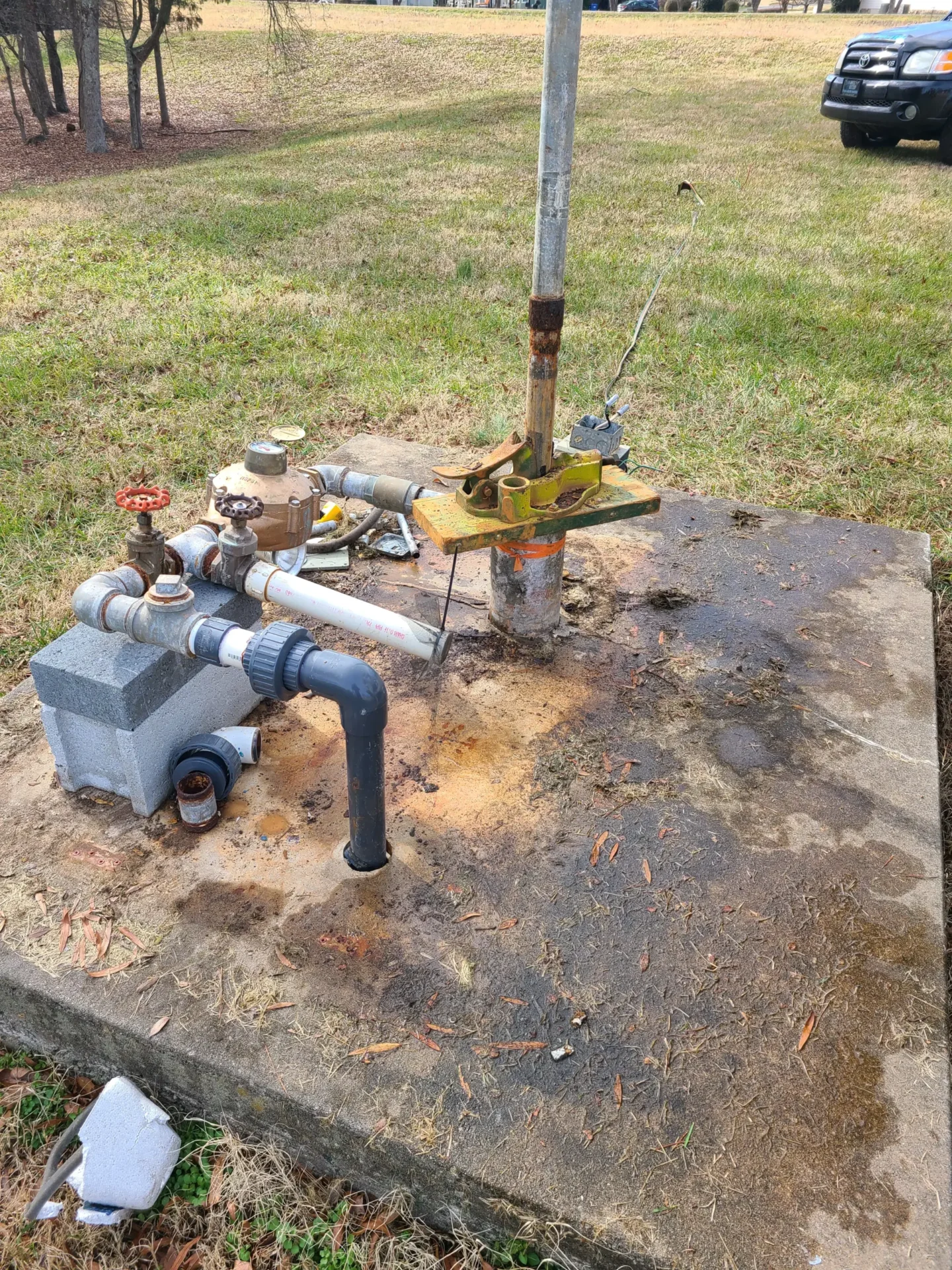When it comes to maintaining your home’s water supply, addressing well repair issues promptly is crucial. Your well is more than just a source of water—it’s a complex system that requires occasional maintenance and repair.
Common problems can range from a drop in water pressure to strange noises or even murky water. But how do you know when it’s time to call a professional? Understanding the signs can save you from bigger, costlier issues down the line. This is where knowing a bit about common well problems and their solutions comes into play.
Whether it’s replacing a worn pump or addressing contamination, a skilled plumber can often quickly diagnose and resolve these issues, ensuring your water supply is safe and reliable. Let’s dive into the signs that indicate it’s time to pick up the phone and call a plumber, and explore some typical well repair scenarios and their solutions.
What are common signs of well pump failure?
Common signs of well pump failure include:
- No Water Flow: One of the most obvious signs is no water flow from your taps. This can indicate a complete pump failure or an issue with the electrical supply to the pump.
- Low Water Pressure: If you notice a significant drop in water pressure, it could be a sign that the well pump is struggling to maintain the necessary pressure levels.
- Air Spitting from Taps: If air comes out of your taps along with water, it could mean a problem with the well pump or a dropped water level in the well.
- High Electric Bills: A malfunctioning pump may run continuously or more frequently than normal, leading to unusually high electric bills.
- Strange Noises: Unusual sounds, such as clicking, banging, or grinding noises from the pump or pipes, can indicate mechanical problems with the pump.
- Dirty Water: If the water from your taps is dirty or contains sediment, it could be a sign that the well pump is not functioning properly and is pulling in dirt or debris from the well.
- Cycling On and Off: A good pump that frequently cycles on and off can indicate pressure tank issues, a leak in the system, or a malfunctioning pump.
- Foul Odors or Taste: Changes in the taste or smell of your water, such as a metallic taste or a rotten egg odor, can indicate contamination or issues with the well pump.
- Visible Leaks: If you see water pooling around the pump’s base or in the well house, there might be a leak in the pump or the connected pipes.
If you notice any of these signs, it is important to have a professional inspect your well pump to diagnose and address the issue before it leads to more serious problems.
How do you diagnose low water pressure in a well system?
Diagnosing low water pressure in a well system involves several systematic steps to pinpoint the underlying cause. Here’s a detailed approach:
Check Multiple Fixtures
- Scope of Issue: Determine if the low water pressure affects all fixtures or only specific ones. This will help determine whether the problem is localized or systemic.
Inspect the Pressure Tank and System Components
- Pressure Gauge: Check the pressure gauge on the pressure tank. Normal pressure ranges are typically between 40 and 60 psi (pounds per square inch).
- Pressure Switch: Inspect the pressure switch settings. Ensure they are correctly adjusted according to the recommended pressure settings for your system.
- Pressure Tank: If your system has a pressure tank with a bladder, check for proper functioning. A faulty bladder can lead to inadequate pressure.
Check for Leaks
- System Inspection: Inspect all visible pipes, connections, and the pressure tank for any signs of leaks. Even small leaks can significantly reduce water pressure.
Assess Well Pump Performance
- Pump Operation: Listen for any unusual noises coming from the well pump. Ensure the pump is running smoothly without excessive cycling.
- Pump Capacity: Assess whether the well pump can deliver sufficient water volume and pressure for your household’s needs.
Water Quality Considerations
- Water Quality: Poor water quality can sometimes contribute to low-pressure issues. Check for signs of sediment buildup or clogged filters in the system.
Professional Inspection
- Expert Evaluation: If you cannot identify the issue or if the problem persists despite your efforts, it may be necessary to consult a professional, well-system technician. They can conduct more advanced diagnostics and repairs as needed.
By methodically checking these aspects of your well system, you can often identify the cause of low water pressure and take appropriate steps to resolve it effectively.
What causes water discoloration in well water, and how can it be fixed?
Various factors can cause water discoloration in well water, and the appropriate fix depends on the specific cause. Here are common causes and solutions:
Causes of Water Discoloration
- Iron and Manganese: These minerals naturally occur in many groundwater sources and can give water a reddish-brown or black color, respectively.
- Sediment and Turbidity: Fine particles of sediment in the water can cause cloudiness or a murky appearance.
- Tannins: Organic material from decaying vegetation can impart a yellowish or tea-like color to water.
- Corrosion: If the plumbing system or well components are corrupted, it can lead to discolored water, often appearing rusty or brown.
- Bacteria and Organic Matter: Certain bacteria or organic matter types can cause water to appear yellow, brown, or even greenish.
Solutions to Water Discoloration
- Filtration Systems:
- Sediment Filters: Install sediment filters to remove particles and sediment from the water.
- Activated Carbon Filters: Effective against organic compounds, tannins, and some chemicals that can cause discoloration.
- Iron or Manganese Filters: Specialized filters designed to remove iron or manganese from water.
- Water softeners can help reduce iron and manganese levels, contributing to discoloration.
- Oxidation and Filtration:
- Aeration: Introducing air to oxidize iron and manganese makes them easier to filter.
- Oxidizing Filters: Use filters that promote oxidation of contaminants before filtration.
- Chemical Treatments:
- Chlorination: Effective against bacteria and some organic matter that cause discoloration.
- Polyphosphate Treatment: Helps prevent iron and manganese from precipitating out and causing discoloration.
- Well, Maintenance:
- Well, Cleaning: Periodic cleaning of the well and disinfection can help reduce bacterial growth and organic matter.
- Professional Assessment:
- If discoloration persists despite basic treatments, consult a water treatment professional. They can conduct water testing to identify the specific contaminants and recommend tailored solutions.
Addressing water discoloration requires understanding the underlying cause through testing and implementing appropriate treatment methods to ensure safe and clean drinking water.
When should you consider replacing a well pressure tank?
It would help if you considered replacing a well pressure tank under the following circumstances:
- Loss of Pressure: If your water pressure drops significantly and the pressure switch and pump function properly, it could indicate a problem with the pressure tank.
- Short Cycling: If the good pump frequently turns on and off rapidly (short-cycling), it may indicate issues with the pressure tank not holding the correct pressure or having a malfunctioning pressure switch.
- Waterlogged Tank: Pressure tanks can become waterlogged over time, meaning they lose their ability to maintain air pressure properly. This can lead to inconsistent water pressure.
- Corrosion or Physical Damage: Visible signs of corrosion, rust, or physical damage to the pressure tank can compromise its structural integrity and effectiveness.
- Old Age: Pressure tanks typically have a lifespan of 10-15 years, depending on usage and maintenance. If your tank is approaching or past this age, replacement might be necessary to avoid potential failures.
- Water Quality Issues: If the water quality has deteriorated due to sediment or rust in the pressure tank, replacing it could improve.
- Frequent Repairs: If you frequently repair components of the pressure tank system, replacing the tank altogether may be more cost-effective in the long run.
When considering replacement, it’s advisable to consult a professional well-system technician. They can inspect your system, perform tests, and provide recommendations based on the specific condition of your pressure tank and overall well system. This ensures you choose the right size and type of tank for your household’s water needs.
Call Us for Expert Well Repair Solutions
At Well Doctor LLC, we understand the importance of a reliable well system. If you’re experiencing issues like low water pressure, discolored water, frequent pump cycling, or strange noises from your well, it’s time to call us.
Our expert plumbers specialize in diagnosing and resolving common good problems efficiently. Whether it’s replacing a worn-out pressure tank, addressing sediment buildup, or optimizing pump performance, we have the expertise to ensure your well operates smoothly.
Don’t wait for small issues to become major headaches—contact Well Doctor LLC today for reliable, well-repair solutions and peace of mind.

